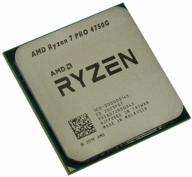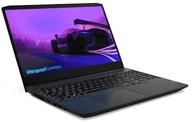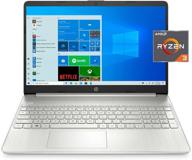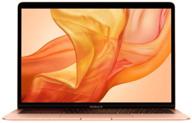
Review on Beelink Mini PC GT-R Pro Window 10 Pro AMD Ryzen 5 3550H | High Performance Same Screen Gaming HiFi Computer with 16GB RAM, 512GB SSD, WiFi 6, BT 5.0 by Michael Hicks

Wow, an extensibility story in a small box
I have used many NUCs and BRIX and other similar mini pc/micro pc's over the years but this Beelink is the first to give me decent storage and expandable storage in the box. This is of course mainly due to the use of AMD SOC, but they also had to design the box and have M.2 NVME, M.2 SATA, *AND* room for an internal 2.5" SATA drive (that includes a tiny ribbon cable and an adapter for it, everything fits in) It's really great. And on top of that I can install up to 64 GB of DDR4 memory (SODIMM) in it (e.g. 2 x 32 GB). I have the 16GB version that comes with a 16GB SODIMM installed. So dual channel SODIMM isn't used by default, but it also means that I only had to buy an additional 16GB SODIMM to get 32GB total memory instead of replacing the existing memory entirely. Flexibility to expand storage I cannot display games or other Windows content for this type. I'm using an open source OS for a 24x7 NVR system and some home automation services. The device is compatible with Linux, BSD and of course Windows. There is A+. Looks like they even included bootable media, so theoretically I could even go back to Windows after cleaning. The included cables, bootable recovery media, and other goodies in the box are high quality and feel good. Includes power supply and suitable for 57W (19V @ 3A). For my use case, I need the performance to be able to do at least some transcoding (as a laptop SOC it obviously has severe limitations, but it's still a long way off, much faster than RPI 4). and I need extra storage to hold video files to keep from wearing out SSDs. With as little power as possible. This device consumes about 15 watts at my load (see appendix below). It used 20W but I found settings to drop it down to 15W and the fan doesn't run at 25% load. The BIOS has some interesting features. In particular, in the AMD submenus you can set the performance envelope. 12W, 15W, 25W, 30W etc. up to 55W. Of course, the heat pipes and fan can only dissipate a limited amount of heat, and I'm particularly interested in running it in the lowest possible power mode, which is why I use the 12W setting. This doesn't really reduce the power of the entire device to 12W. it's more like 20W (12W for the SOC core only). I believe the device defaults to the 25w setting. This parameter has practically no influence on continuous loads. At first it seems like it squirts more at the beginning. In fact, see attachment below, there is no need to change this BIOS setting even if you want to decrease performance. As with all recent AMD processors, a single core will definitely run at higher frequencies, while a multi-core workload will be frequency limited to keep the required powerband as high as possible. The external I/O is just as impressive as the internals. 6 USB-A ports (blue, maybe USB 3.1 or something), 1 USB-C port. Three video connections. Then additional "expansion mode" ports (two more USB A ff, then USB-C and HDMI for video duplication). Good thing there are so many ports on such a small device! No reset button :-). But I don't give a star for that. This is not a desktop computer. Edit: add. Since I was running my beefier home automation services 24/7, there was a problem. I put a 4TB Samsung SATA SSD in this little one, and the little ribbon cable connecting the SATA in the box is clearly having communication issues at 6Gb/s. I made sure the ribbon connectors on both ends fit snugly, no problem. I had to force the interface to run at 3GB to get rid of the bugs. Samsung SSDs seem a bit touchy in this regard. But since then it's been working great. Another point I realized was that I could lower my home automation load to 15W by disabling turbo mode and setting the max frequency to 1.7GHz. It's still 4-core/8-thread. I just reset the bios to its normal 25w settings and forced the frequency in linux. As a nice bonus, the fan doesn't work (the system is loaded at 35% at 1.7 GHz, 24x7). This is with an NVME system drive and a 4TB Samsung SATA SSD with 32GB RAM. 15 W. Wow. I am really impressed. - Matt
- Everything is great!
- Expensive
New products
Comments (0)
Top products in 💻 Desktops

14" ASUS Vivobook Pro 14X OLED N7400PC-KM059 2880x1800, Intel Core i5 11300H 3.1GHz, RAM 16GB, DDR4, SSD 512GB, NVIDIA GeForce RTX 3050, no OS, 90NB0U44-M01450, silver

26 Review

Refurbished 2019 Apple iMac with Retina 4K/3.6 GHz Intel Core i3 🖥️ Quad-Core (21.5-Inch, 8GB RAM, 1TB) - Silver: Ultimate Deal on a Powerful Renewed Desktop!

13 Review

Processor AMD Ryzen 7 PRO 4750G AM4, 8 x 3600 MHz, OEM

11 Review

15.6" Laptop ASUS Vivobook Pro 15 M6500QC-HN118 1920x1080, AMD Ryzen 7 5800H 3.2GHz, RAM 16GB, DDR4, SSD 512GB, NVIDIA GeForce RTX 3050, no OS, 90NB0YN1-M006N0, blue

24 Review
Another interesting products

Lenovo IdeaPad Gaming 3: 15.6 Inch AMD Ryzen Gaming Laptop with RTX 3060 6GB GDDR6

118 Review

Apple MacBook 13 Inch 2 3GHz 256GB

92 Review

HP 15 Ef1300Wm 3 3250 Silver Windows

100 Review

Renewed Apple MacBook Air - 13-inch Retina Display, 💻 1.6GHz Dual-core Intel Core i5, 256GB in Gold (Latest Model)

156 Review

